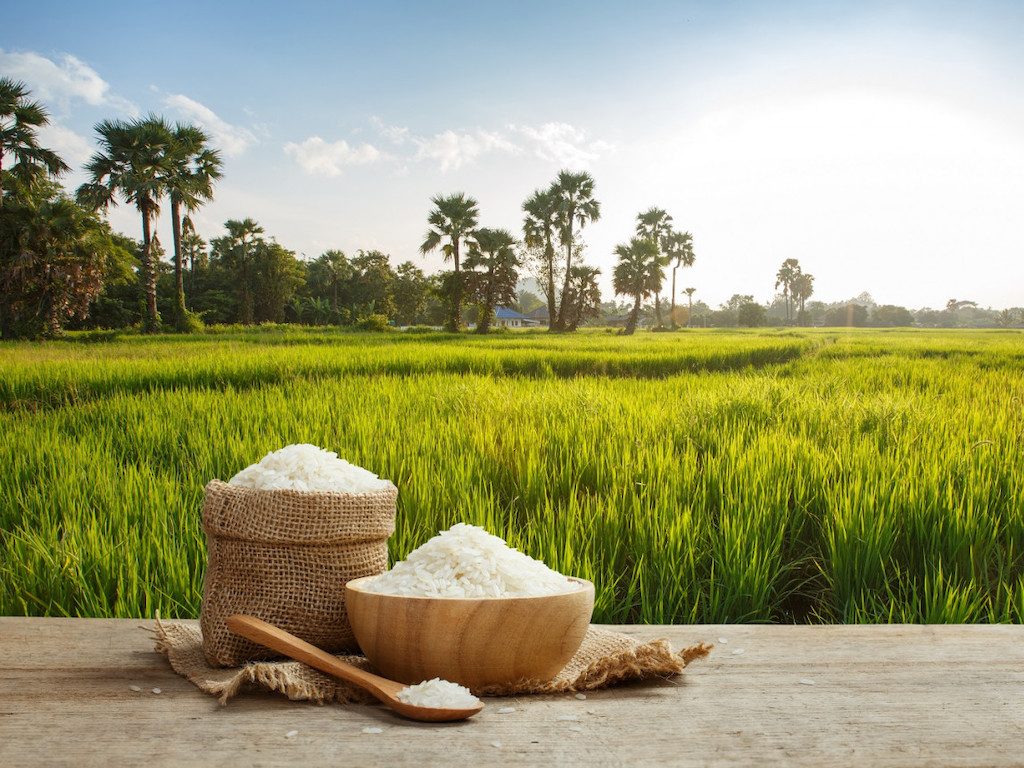3 Mins Read
A staple food for more than half of the global population, many of them in Asia, rice is one of the most vital food crops in the world. But it is also the most polluting out of all grains, and demand continues to rise alongside population growth. While half a million farmers are already using more sustainable rice cultivation methods, governments, big agribusinesses and consumers need to be on board to help shift towards a food system that can cope with the challenges of a world of 10 billion people by 2050.
Created in 2011 by the UNEP and the International Rice Research Institute, the Sustainable Rice Platform (SRP) has been rolling out projects to change the way the world produces rice. Since its initial program in 2015, the platform has partnered with over half a million farmers across 21 countries to promote more sustainable rice cultivation that requires far fewer resources.
Farmers under the SRP use a laser transmitter to ensure that the field is levelled evenly to reduce the amount of water and fertiliser needed. Instead of the traditional method of broadcasting where seeds are scattered by hand or mechanically, drilling machines are used for direct seeding, which drastically reduces the amount of seeds needed, and makes it easier for farmers to monitor crops.
Read: Is the UN food security backed by agrochemical farming giants?
Overall, this alternative production method for rice requires 20% less water and 50% less greenhouse gas emissions. At the same time, farmer’s incomes have been raised by 10% – the efficiency of the process means that farms are able to increase their yields.
Changing the way the world produces rice will be key to fighting the climate crisis amid a ballooning population that will increase demand for the staple crop. Conventional methods of rice cultivation uses flooded fields, is land and resource-intensive, and is responsible for almost 2.5% of greenhouse gas emissions.
According to agribusiness firm Olam International, if these current methods don’t change, additional land equivalent to the size of Chile would be needed to meet rice demand by 2050. This has yet to take into account the added vulnerabilities that climate change will bring – farmers will have to face increasingly unpredictable rain and other weather patterns, which will likely impact the plantable land area for rice cultivation even more than previously thought.
Though the SRP has gotten 500,000 farmers on board with a more sustainable method to produce rice, in the midst of an escalating climate emergency with compounding impacts on global food security, more needs to be done. Governments have a role to play to implement crucial climate mitigation and adaptation measures and farming regulations that oversee fertiliser management and water wastage.
Read: Climate resistant crops are the future of food
For consumers, we need to become more aware about the products we buy, and the production practices behind it. The SRP has collaborated with Global G.A.P., an organisation setting worldwide standards for agricultural products, to establish the world’s first rice certification label. When this information is made available to consumers, each purchase counts as a vote for or against sustainable farming practices.
While rice production will have significant impacts on global food security, so will other crops. Global mono-culture farming is depleting topsoil nutrients, encouraging pathogen buildup, which then requires the use of pesticides and contaminants. At the same time, volatile weather patterns and climate change is already affecting crop yields of staple foods besides rice, among the list are coffee, potatoes and bananas.
Scientists agree that we need to expand our agro-biodiversity, and begin incorporating more varieties of crops that are climate-resilient in order to meet the challenges of feeding a population of 10 billion. To that end, a number of food techs have risen to the task, such as Singapore-based NamZ who is making a sustainable and nutritionally-packed version of instant noodles with under-utilised “future fit crops” like groundnuts, lupin and moringa.
Lead image courtesy of Shutterstock.




